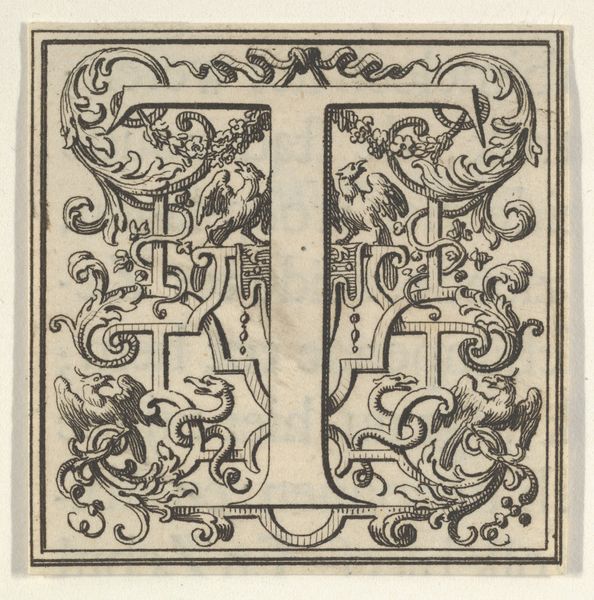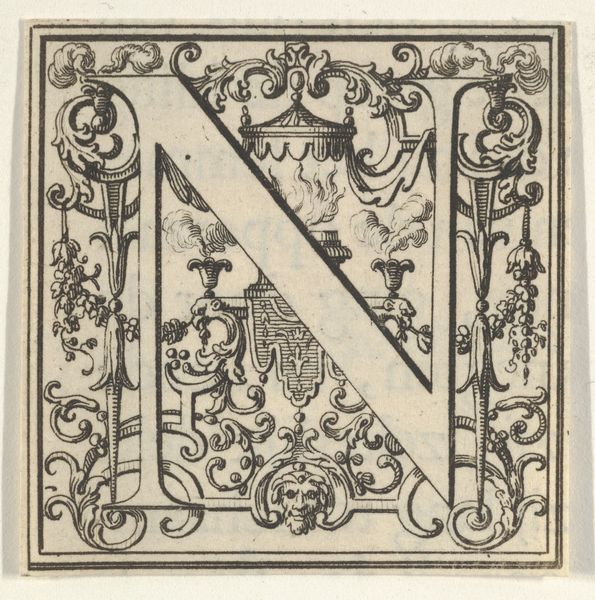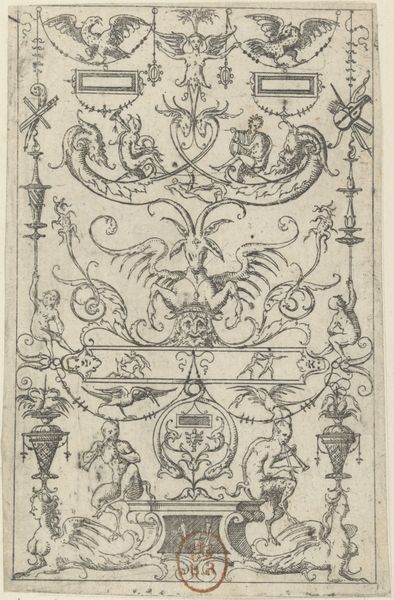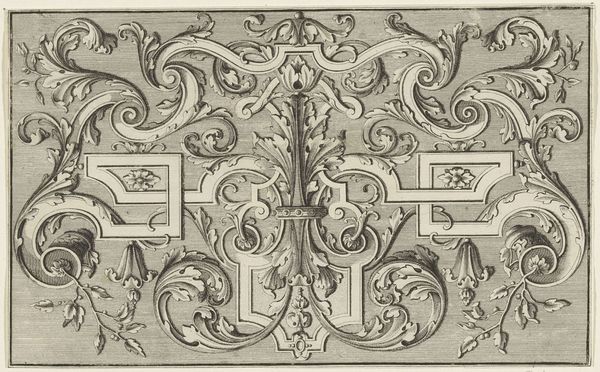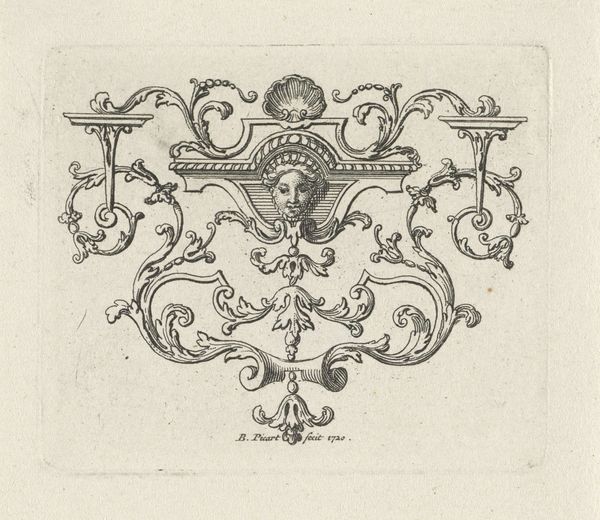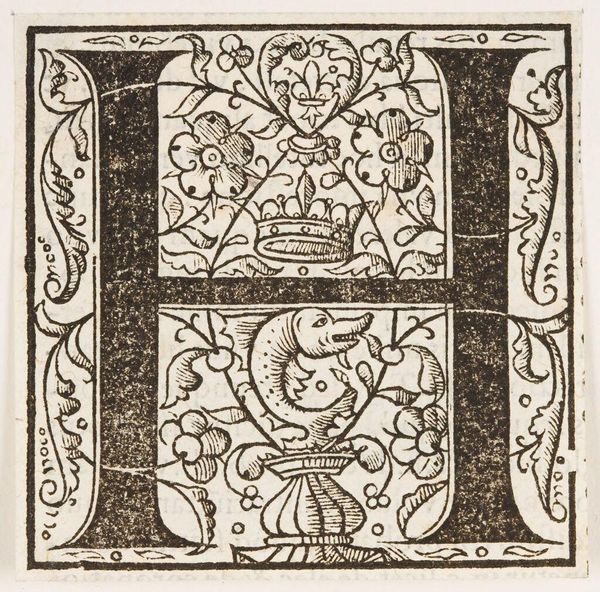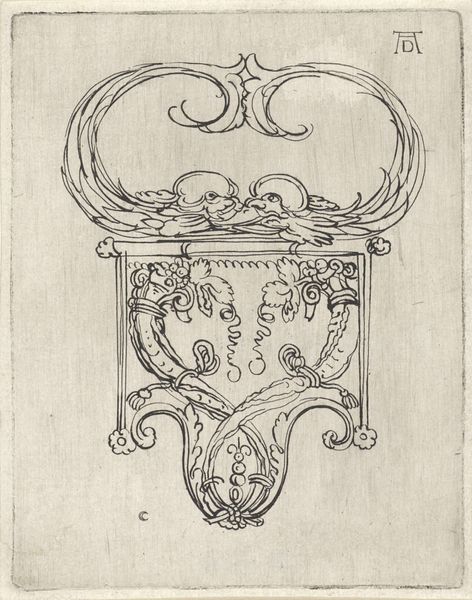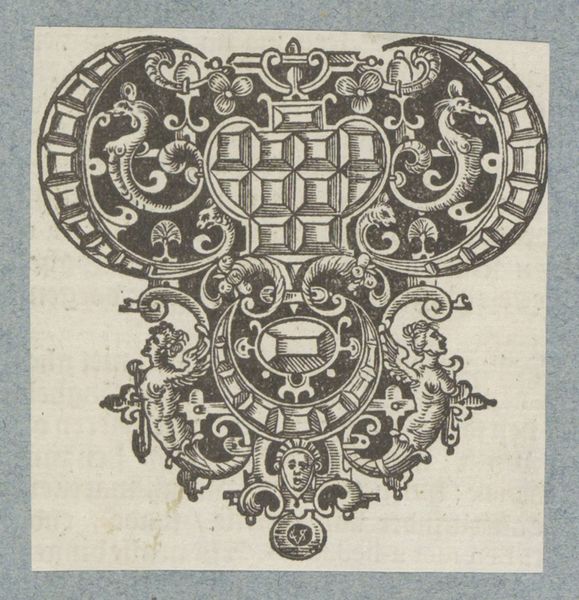
Roman Alphabet letter O with Louis XIV decoration 1700 - 1733
0:00
0:00
drawing, print, typography, engraving
#
drawing
#
baroque
#
pen drawing
# print
#
typography
#
geometric
#
decorative-art
#
engraving
Dimensions: Sheet: 2 3/16 × 2 1/8 in. (5.5 × 5.4 cm)
Copyright: Public Domain
Editor: So, this engraving, "Roman Alphabet letter O with Louis XIV decoration," dates from between 1700 and 1733, and it was made by Bernard Picart. It strikes me as quite elaborate, especially for what is ostensibly just a letter! How do you interpret this work? Curator: Well, as a materialist, I’m immediately drawn to the process and context. Consider the labor involved in producing such a detailed engraving. Each line, each flourish meticulously etched, suggests a significant investment of time and skill. We must look at the political climate under Louis XIV. How does this visual vocabulary connect with the regime's production and consumption? Editor: So, the very act of creating such a decorative letter could be seen as a reflection of the values of the time? The Baroque style emphasizes ornamentation and detail; how does that relate to power structures? Curator: Precisely. Think about the intended audience and the function of this letter "O". Was it purely decorative, or did it serve a propagandistic purpose, reinforcing notions of royal authority through visual excess? The choice of materials - the paper, the ink, the engraved plate - all speak to a specific mode of production and dissemination. Could we draw connections between printmaking processes and their influence in propagating the Baroque? Editor: That makes me wonder about accessibility. Engravings could be reproduced, making this image potentially more widely available than a unique painting. But were they truly accessible to all? Curator: Excellent question. We must examine the economic and social factors surrounding print consumption during this period. While engravings were more accessible than unique artworks, literacy and affordability still limited their reach. These limits remind us that art objects do not always challenge structures of power by disrupting artistic standards, practices, distribution, and accessibility, among other possible ways. Editor: I see now how focusing on the material aspects—the how, the why, and the for whom—reveals so much more than just aesthetic qualities. It opens up a dialogue about social dynamics. Curator: Exactly. By considering the material conditions of its creation and reception, we gain a deeper understanding of its cultural significance and lasting impact.
Comments
No comments
Be the first to comment and join the conversation on the ultimate creative platform.
